Pike perch is a predator that prefers deep places in any body of water, be it a small / medium river, or an extensive reach of a reservoir. It is due to the fact that this predatory fish almost always keeps the depth, when fishing for a fanged robber, spinningists in most cases prefer jig lures, and in some conditions, the best results on zander are shown by a diverter lead (the Moscow rig, in fact, in one of the modifications resembles a feeder installation type paternoster). Diversion – spaced jig mounting is used in special conditions, most often at long distances, great depths and strong currents, both in combination of these factors and under some of the conditions listed. It is in these places that it is worth looking for pike perch, therefore, the diverter leash is most often used when fishing for fanged and
perchand not so often
pike . The article will discuss the features and types of installation of the Moscow rig, as well as the secrets of catching pike perch on a diverter leash on a stream on a river and stagnant bodies of water without a current.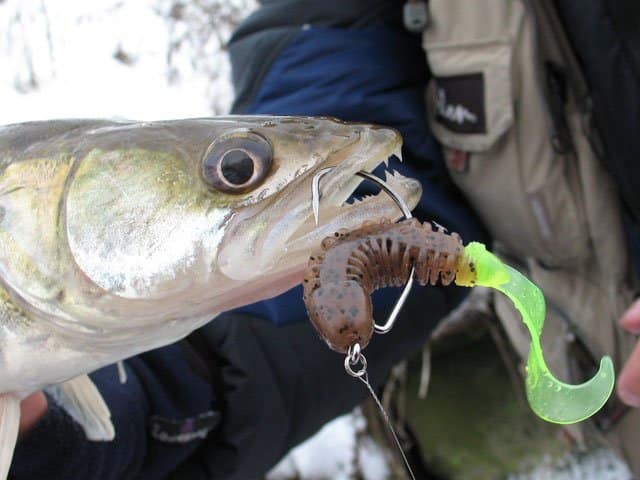
- Moscow tooling – design features
- In what conditions and why is it better to use a drain
- How to tie a diverter leash and which installation to choose for pike perch in different conditions: schematically and clearly with a photo
- What you need to consider when installing the drainage specifically for zander
- Technique for catching zander on a diverting leash: feed, wiring
- Promising fishing spots
- Shore and boat fishing on water bodies without current
- Catching pike perch on the outlet from the shore and boats on the current
- What bait to choose for pike perch for Moscow rig
- Collecting tackle for catching fanged
- Поделиться ссылкой:
Moscow tooling – design features
The classic Moscow rig is a spaced-out installation, in which the load and the bait are spaced apart and located on different leashes. Some experts (experienced spinners, for example) believe that the origins of such rigging were borrowed from feederists … Classic diverter: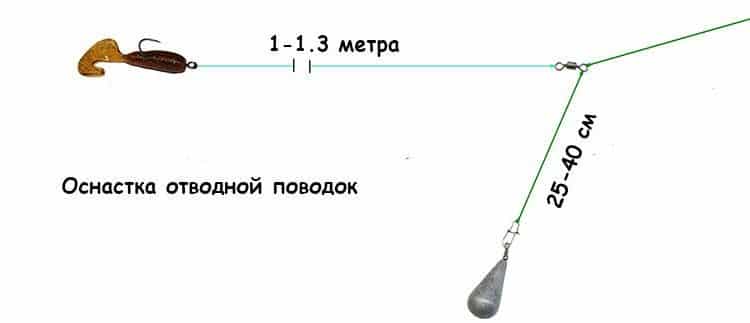
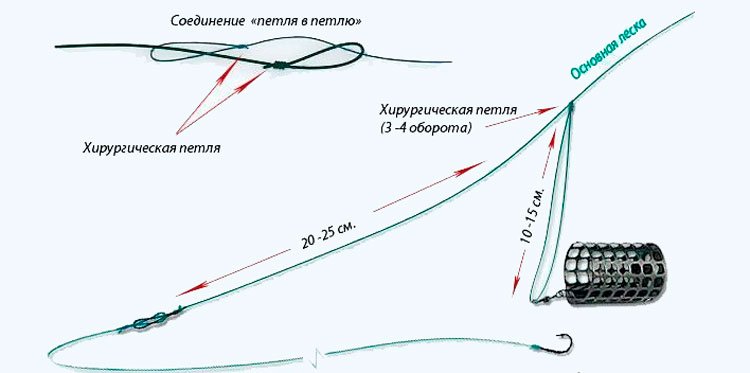
In what conditions and why is it better to use a drain
It should be understood that a diverter leash when fishing for pike perch or other predatory fish is not a panacea, it has both advantages and disadvantages, but if used in the “right” conditions, in the correct installation and with the correct wiring, it often helps to get away from zero. leaving behind other jig rigs.
Compared to other assemblies, Moscow equipment has the following advantages:
- allows you to fish pointwise, practically on the spot, even very deep parts of the water area, combined with or without a current;
- slow wiring is possible even in a strong current, where pike perch often keeps, but unlike usual jig, the bait is not squeezed out to the surface and the horizontal component prevails in the movement of the silicone;
- allows you to throw heavy weights paired with a small / medium bait without disturbing the game of the latter;
- the next plus follows from the previous fact – you can select the weight of the load in such a way as to throw it at the required distance and hold it at the required depth, and take the bait that you see fit, without relying on the need to match the load;
- great for a muddy (stony, leafy) bottom, when the bait needs to be held clearly at the bottom, but not dragging it along the very bottom;
- works on a passive, languidly taking bait, fish, due to the fact that the predator does not feel the resistance of the load when biting (primarily concerns the floating installation), and also due to the natural behavior of silicone on sluggish animation.
So, based on the habits and places of parking and hunting of pike perch, a diverter leash for this particular fish should be used in the following cases:
- catching zander on a lead line will be effective in large deep waters, where you need to use heavy sinkers, with not the most massive lures of 2-3 inches;
- when fishing for pike perch on a hard rocky bottom, a diverter leash when using a running load allows you to avoid unnecessary hooks of the load in the stones;
- along the edge and river dumps;
- Fishing for zander from the shore often requires long casts to a depth, in such cases, a diverter leash is also needed to deliver a weighty load, but at the same time be able to make a typical zander drive.

How to tie a diverter leash and which installation to choose for pike perch in different conditions: schematically and clearly with a photo
In detail, we covered in detail all the main options for rigging a diverter leash with a clear photo and nuances of installation, as well as the advantages and disadvantages of each, in the articles about perch and pike
here and
here . We recommend that you familiarize yourself. Technically, the main points when fishing for perch, pike and zander are the same. The difference (as regards the creation of the installation, and not the fishing part) when fishing for zander is only in the materials, the weight of the weights and other small, but important nuances. We will discuss them. The main options for rigging a diverter leash are schematic (from left to right, deaf through a loop, deaf to a swivel, deaf through a fastener connecting the leashes, sliding):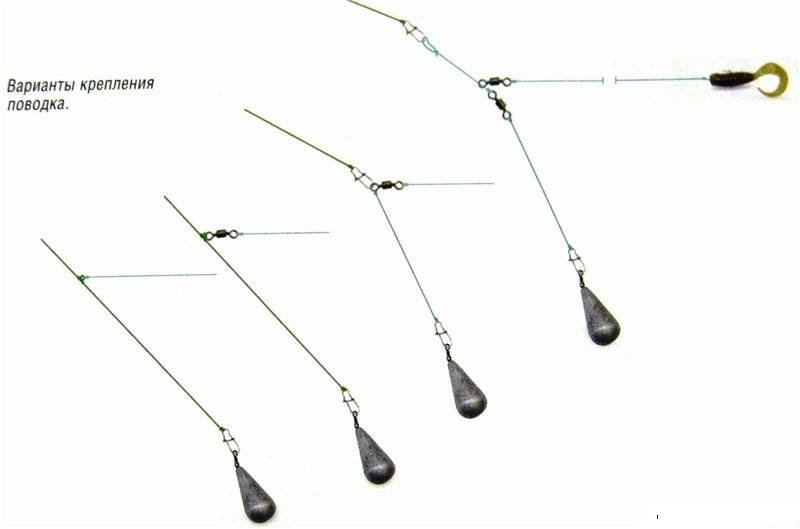
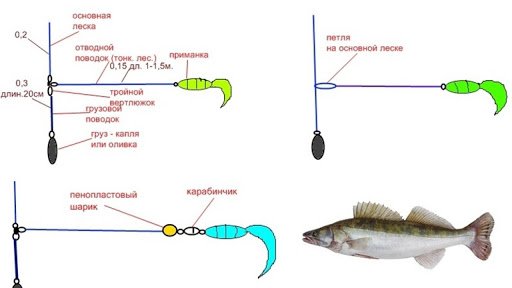
What you need to consider when installing the drainage specifically for zander
For pike-perch, there is no need for a thick fluorocarbon leash, and even more so for an iron leash, like for a pike. But at the same time, very thin leashes of 0.15-0.2 mm, as some authors advise, are not practical, due to the fact that fishing often takes place among stones, pebbles and sand – on hard types of bottom that are popular with pike-perch. This means that the wear of fluorocarbon will be significant and constant. And the pike perch is not such a weak opponent. In our opinion, the optimal fluor diameter for a bait leader is 0.28-0.38. The length of the leash ranges from 0.8-1.2 meters and directly depends on the type of bottom and the behavior of the zander in a particular period of the season. In view of the fact that the fanged one often keeps at the rocky bottom, among lonely boulders, a flooded snag and small branches, one should give preference to running sinkers,they get stuck less and are easier to pull out when hooked. For the same reason, baits should be equipped with offset hooks. The weight of the sinker is selected in such a way that it is possible to carry the bait close to the bottom without rapid demolition, if fishing is on the current, and also so that the sinker clearly “rings” and tapped into the hand all movements during the drive and with careful bite of the predator. https://youtu.be/80WOND1llGA
Technique for catching zander on a diverting leash: feed, wiring
Promising fishing spots
When fishing for zander, it is of great importance to correctly determine the place of hunting for a fanged. Zander is a typical bottom predator; it prefers a hard bottom – pebbles, sand, rocky ridges. On rivers he chooses places with a heterogeneous relief, at the bottom of the dumps in depth, on the coastal and channel edges. He hunts at the borders of a fast stream and a slow current. If there are any, he chooses places that can serve as an ambush – boulders, a flooded snag, islets, etc.
Shore and boat fishing on water bodies without current
On reservoirs without a current, a promising pike-perch point or water area is selected and fished with the help of a diverter leash in a fan-like manner. All available water area is divided into sectors and each is fished with 3-5 casts starting from a closer distance and gradually increasing it, while increasing, if necessary, the weight of the bait.
The difference when fishing for zander from a boat is that having a floating craft, the sector is 360 degrees, and not 180, as is usually the case when fishing from the shore. Well, the angle of attack can be changed by changing the casting point. This, by the way, is a very effective method, especially if several fish have already been taken from the point and the rest of the school is agitated and frightened. Then it makes sense to approach the predator from the other side, as it is often possible to persuade a couple of more specimens.
If there is complete silence, then the bait should be changed to a radically different type – in color, size, shape. We also vary the wiring. The animation of the diverter lead can be as follows – of course, a jig step, wavy above the bottom in a layer of water, uniform wiring with and without pauses, dragging along the bottom, if it allows, light twitching, uniformity with quivering of the tip, tossing, dancing with bait practically in place , as well as a combination of all types, if it is not at all clear what is currently working on zander.
Catching pike perch on the outlet from the shore and boats on the current
Fishing for pike perch on a diverting leash in the current differs from the coastal one in that when selecting a lead, you need to take into account its drift by the current. So you need to choose it so that the drift rate is minimal. When fishing on the current, the cast must be done either across the stream, or upstream so that the bait falls into the working area already at the working depth.
This is a typical mistake for beginners – when spinning on the current, throw the bait directly into the working area, but it will pick up the working depth a good five meters lower! And it’s good if the working area is wide, but what if it is 5 by 5 meters?
When fishing from a boat, the efficiency is higher, especially on large rivers, since it is possible to get to the pike-perch stops as close and from a convenient side as possible, which, of course, increases the chances of success.
Naturally, on reservoirs, large bays and rivers, you cannot do without a boat with an engine and an echo sounder. It is also important to be able to read the nature of the bottom and depth, as well as the direction of the current (in reservoirs with dams, it changes from day to day and throughout the day) by tapping with a sinker. It is worth learning this not only for catching walleye, but also for catching any predatory fish.
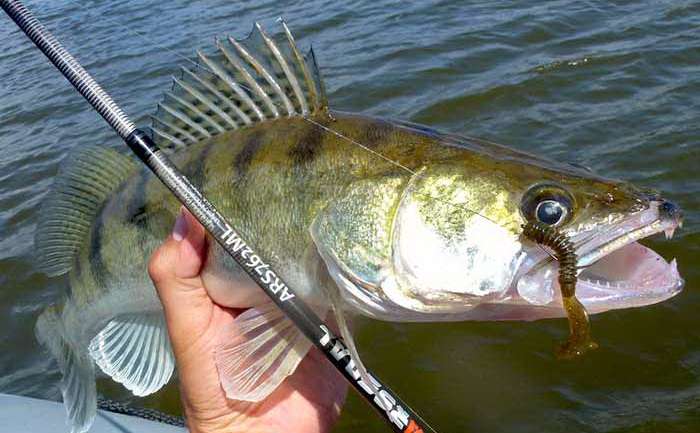
What bait to choose for pike perch for Moscow rig
When fishing for pike perch on a diverter leash, in the overwhelming majority of cases, jig lures are used, moreover, the same ones that are also used for conventional installation on a jig head. Only the possibilities of combining lures with weights, feeding and animation, differ from standard jig fishing, but more on that above. Edible worms, slugs, rippers, twisters, crustaceans, nymphs and other krakozyabry are used. The edible pike perch are in favor, as fishing often takes place at great depths, where edibility is one of the main factors that increase the chance of a bite. For the same reason (if the depths are really greater than 5+ meters), it is worth giving preference to various poisonous colors, fluorescent and defiant combinations. Zander prefers high-frequency lures as far as active silicones are concerned. Size 3-5 inches, most often runny slugs, worms, rippers.Equipped with the appropriate offset. For a 4 ” ripper, for example, a 4/0 Jamakatsu offset size is needed.
The size, like the shape of the offset cover, is selected based on the type and size of the rubber used. The narrower the bait, the lower the mouth of the hook should be.
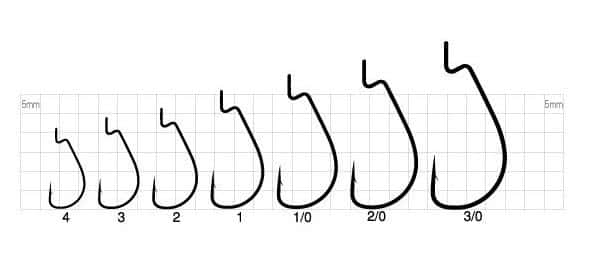
Did not know?! Almost all worms and slugs work better on a diverter lead, especially in large 4+ sizes. And pike perch loves passive rubber actively supplied by the angler in medium and large sizes.
https://youtu.be/n-fLJAQ9IGA
Collecting tackle for catching fanged
In order to select the elements and correctly assemble the tackle for pike perch with a diverting lead, it is worth considering the nature of the reservoir, the size of the alleged predator, and its activity. The blank needs a “daring” fast or extra-fast one, capable of a sharp hooking even at great distances and depths, in order to pierce the mouth with a bony goose. The test usually depends on the type of body of water – depth, size of water area and current. But in general, it is selected for the necessary loads. It is good when there are several rods with a spread of dough from 10 to 60 grams. For small rivers and reservoirs for small and medium perch, a rod with a test of up to 21 grams, a wagon for catching pike perch on a diverter line on most medium rivers and stagnant bodies of water without a current, with a test of 10-35 grams and heavy sticks with a test of up to 50-60 grams for reservoirs and large rivers.More powerful rods are rarely required. For fishing from the shore, you need longer rods up to 2.7 meters long; for a boat, 2.1-2.4 are suitable – universal sticks.
Important! It is worth using light, high-quality sticks made of modern materials whenever possible. Fishing for pike perch is accompanied by long casts, active animation and playing. Therefore, fishing with heavy rods is tiring.
Only braided line is used as the main one. It is necessary due to the practically zero elongation, which is extremely important when fishing for zander. Diameter 0.12-0.2 mm. The reel is needed 2500-3000 according to Shimano, inertialess, traction, with high-quality cord laying. The latter factor is extremely important when fishing at long distances and depths, when long casting of the bait and powerful pulls are required for high-quality animation at long range and depth. Retractable leash is a spinning rig that is gaining popularity among anglers, due to the fact that it allows you to successfully fish in those places where other jig rigs either do not work, or work, but incomparably worse. Therefore, you should not avoid the new, so as not to deprive yourself of the pleasure of catching a test specimen of pike perch.
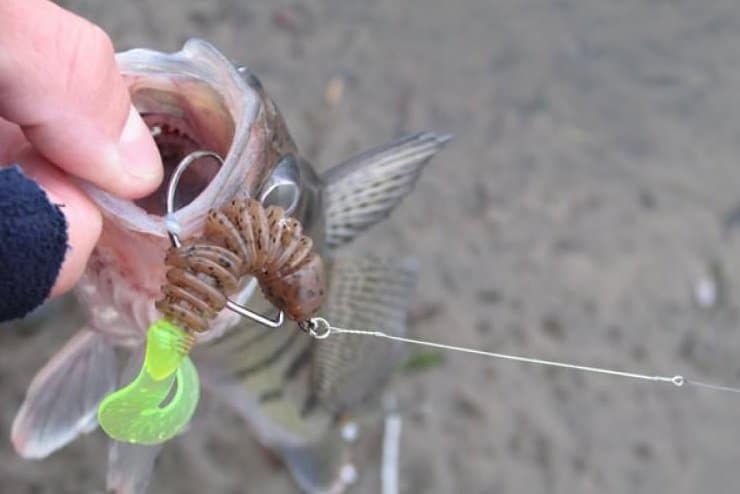

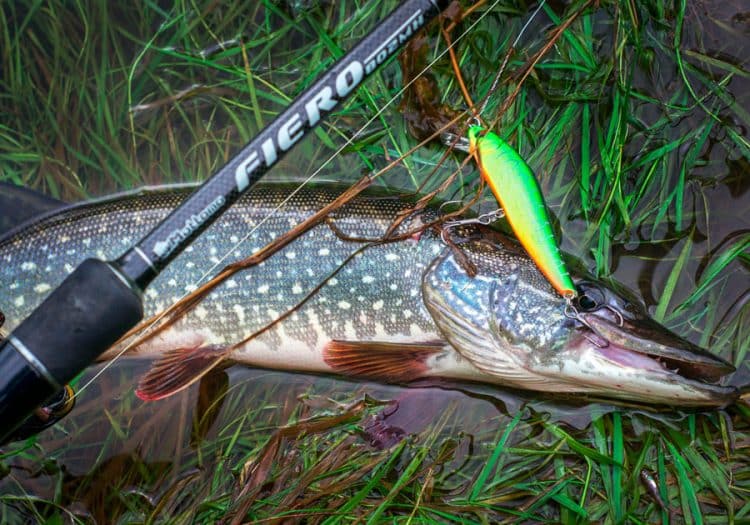

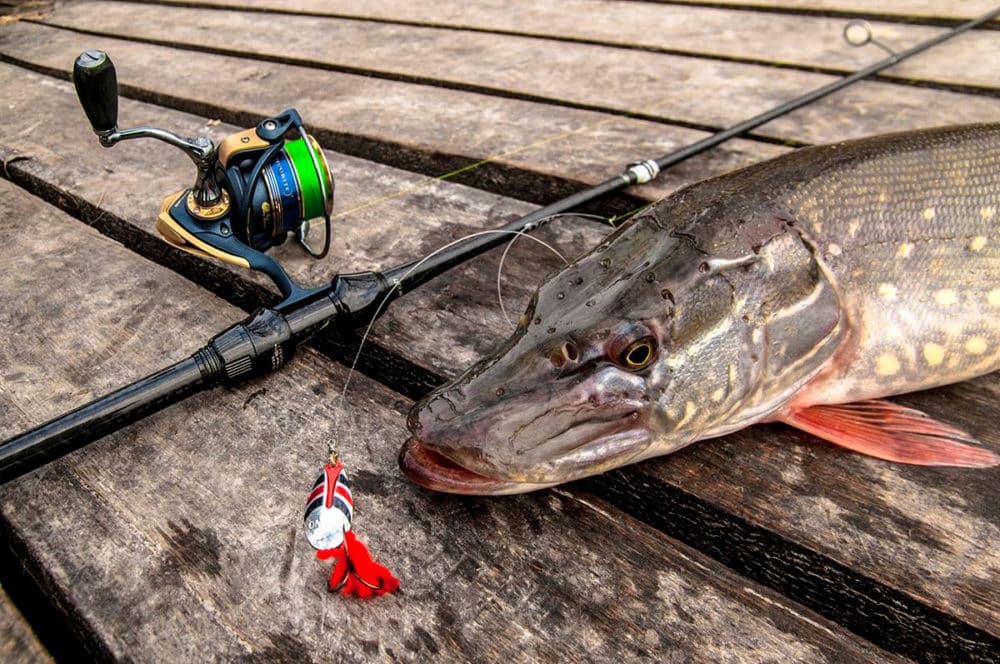
Спасибо,все ясно написано!Будем теперь ловить на опыте 😉 хочу следующий раз поймёт судука ведь Судак он главный представитель этого вида, хоть и похож больше на щуку. ❗